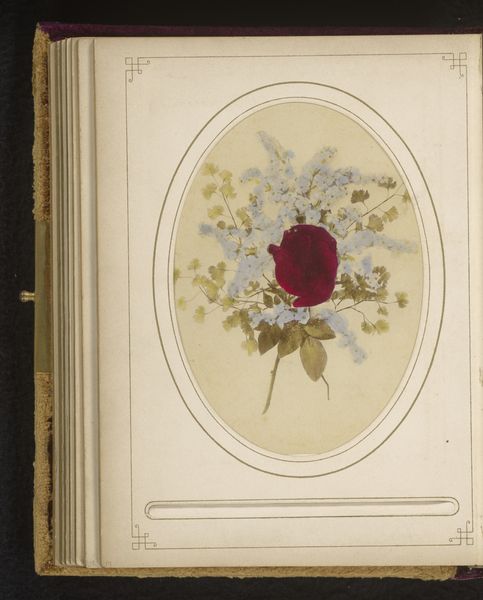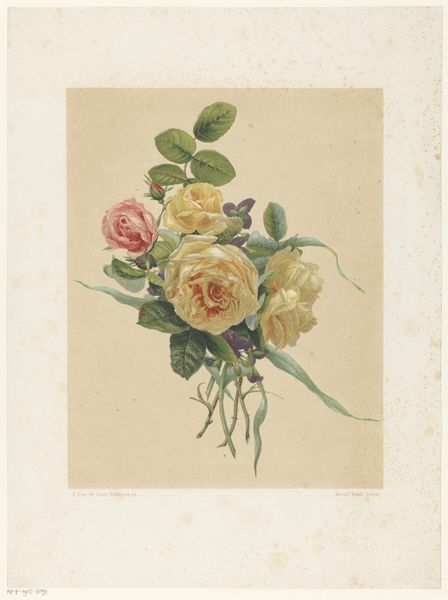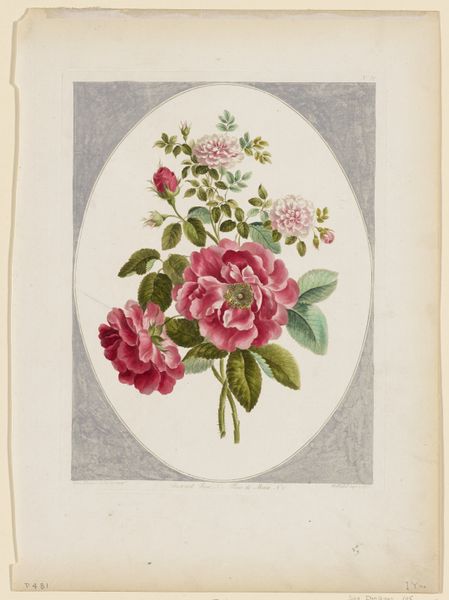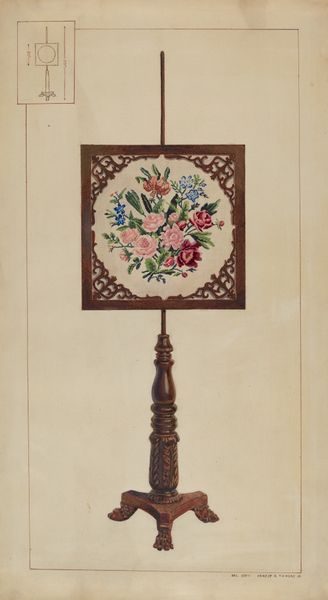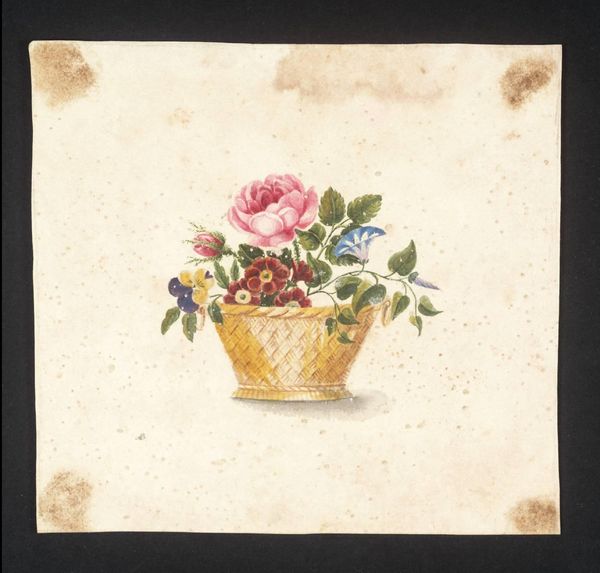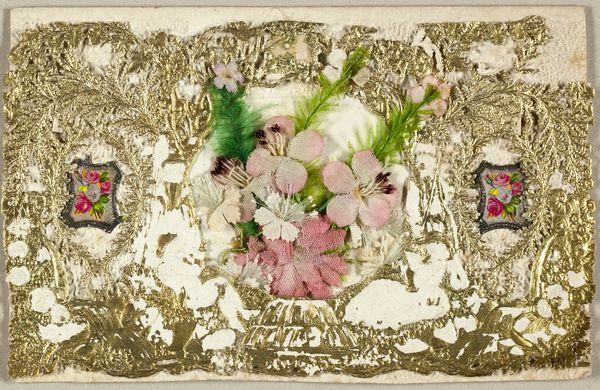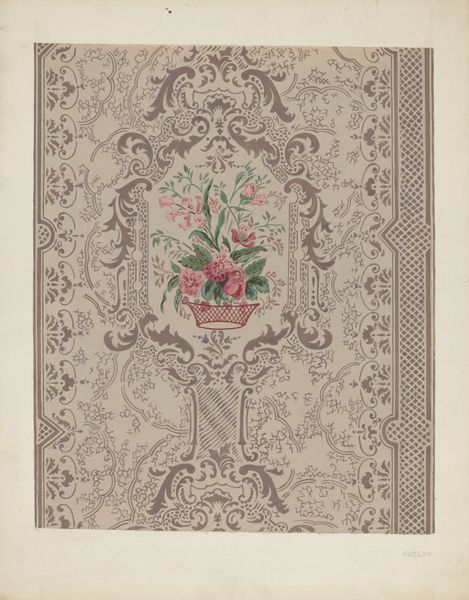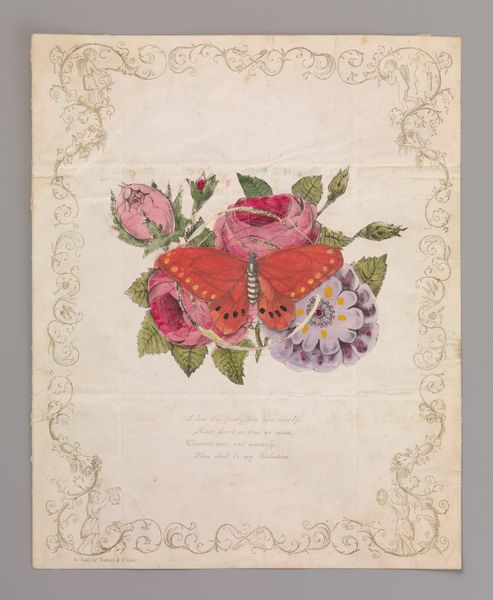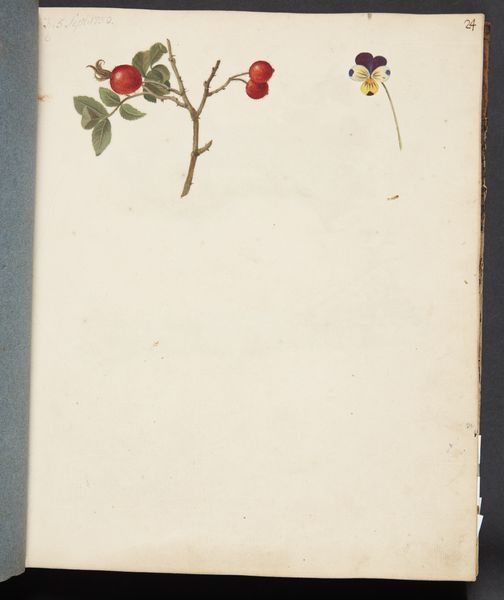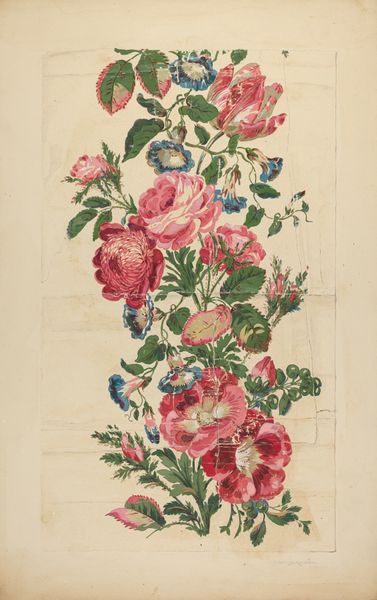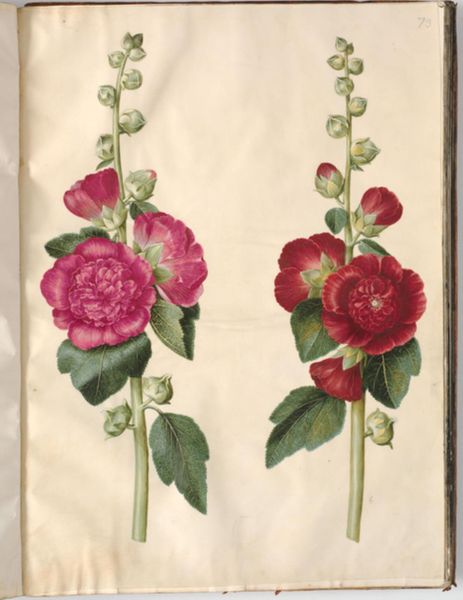
print, photography
# print
#
photography
Dimensions: height 165 mm, width 108 mm
Copyright: Rijks Museum: Open Domain
Curator: Looking at "Sculpture of a Cross Decorated with Roses," a print and photograph made between 1860 and 1890, what are your initial thoughts? Editor: There’s a fragile solemnity about it. The way the roses encircle the cross…it’s both celebratory and mournful. The soft colors also add to the mood of reverence, almost like a fading memory. Curator: Indeed. The cross, centrally staged and bedecked with roses, speaks to the complex relationship between religious devotion and secular sentimentality during this era. I think it serves as evidence of religious iconography becoming a sentimentalized subject, appropriate for middle-class domestic display. Editor: You make a good point. It also makes me wonder about the social context surrounding its creation. Who was producing this and for what kind of market? Were these mass-produced objects or more unique commodities? The means of production surely shaped its reception. Curator: Good questions. Looking closely at the image, you’ll see it has inscription that can give us some insights. It seems to point to themes of life, death, and devotion to God, hinting at its devotional purpose and the symbolic meanings inherent to roses, that perhaps relate to Mary or to earthly and spiritual love. The verse below could give insights into the beliefs held about suffering at the time. Editor: It makes sense. Formally, the composition is fairly straightforward, relying on the symbolic weight of the cross and the visual appeal of the roses to convey its message. I’d be interested to research similar items and find patterns and themes for these kinds of symbolic mementos from the 19th century. Curator: Precisely, looking at it today, the image offers not only artistic qualities but also social commentary. It becomes a material reflection of Victorian attitudes toward religion, beauty, and loss, providing unique access into this complex relationship of material culture, craftsmanship, and spirituality in 19th-century life. Editor: Agreed. The image presents so much more than initially meets the eye. It encourages the viewer to consider not only its aesthetic qualities but also the larger context of its creation and reception, really blurring boundaries between personal art and its historical era.
Comments
No comments
Be the first to comment and join the conversation on the ultimate creative platform.
